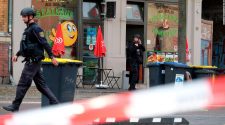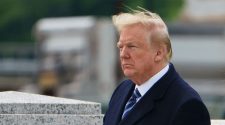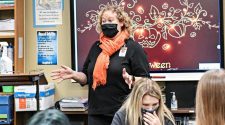Death toll exceeds 100 as number of infections skyrockets.
The outbreak of a mysterious new virus is rapidly spreading, the Chinese authorities said on Tuesday, as the official account of known cases jumped nearly 60 percent overnight and the death toll exceeded 100 for the first time.
◆ China said on Tuesday that 106 people had died from the coronavirus that is believed to have originated in the central city of Wuhan and is spreading across the country. The previous death toll, on Monday, was 81.
◆ The number of confirmed cases increased from 2,835 on Monday to 4,515 on Tuesday, according to the National Health Commission. The youngest confirmed case is a 9-month-old girl in Beijing.
◆ Most of the cases have been confirmed in the central Chinese province of Hubei, the epicenter of the outbreak, where several cities, including Wuhan, have been placed under what amounts to a lockdown. Of the total cases, 2,714 are in Hubei.
◆ Thailand has reported 14 cases of infection; Hong Kong has eight; the United States, Taiwan, Australia and Macau have five each; Singapore, Japan, South Korea and Malaysia each have reported four; France has three; Canada and Vietnam have two; and Nepal, Cambodia and Germany each have one. There have been no deaths outside China.
Hong Kong puts significant limits on travel from the mainland.
Hong Kong on Tuesday implemented a broad series of restrictions aimed at controlling the spread of the coronavirus by limiting the number of mainland Chinese travelers entering the territory, one of Asia’s busiest travel and financial hubs.
The restrictions, which included the suspension of high-speed and other train services between Hong Kong and the mainland, a 50 percent reduction in the number of flights, and a ban on tourism visas for many travelers, were announced by Carrie Lam, the city’s chief executive.
The regulations, which apply to some plane, rail, bus and ferry arrivals, will begin on Thursday. They follow days of rising pressure from health care workers, epidemiologists and even pro-Beijing politicians who have traditionally supported Mrs. Lam’s government.
Previously, the Hong Kong government said restrictions would apply only to Hubei residents and to non-Hong Kong travelers who had visited that province in the past 14 days.
Hong Kong has so far recorded eight confirmed cases of the virus.
Tibet, the only region in China that has yet to report any cases, has temporarily closed all tourist sites to combat the disease’s spread, state news media reported. Major Chinese cities, including Shanghai and Beijing, have suspended long-distance bus services.
Still fresh in the memories of many Hong Kong residents are the effects of SARS, a virus that originated on the mainland in 2002 and killed 299 people in the city.
Hong Kong’s public hospitals have long suffered from strained resources, long waiting times and overcrowding. And months of street protests, and the official response to them, have dented public trust in the government.
The medical faculty of the Chinese University of Hong Kong called for more restrictions on border checkpoints as the virus spreads across China.
“The next week or two will be a critical time for the development of the epidemic. We must closely monitor whether there is a community outbreak outside Hubei Province, especially in Hong Kong’s neighboring regions,” the department said on its Facebook page.
Workers from Hong Kong’s Hospital Authority have planned a strike for next week to demand a law mandating the wearing of masks in public and banning all visitors from entering the city through the mainland.
Shortage of test kits in hot zone prompts concern that cases have been underreported.
A shortage of medical kits needed to quickly diagnose the new form of coronavirus spreading across China has slowed the country’s ability to respond to the outbreak and fueled concerns that the number of cases has been underreported.
China’s Medical Products Administration said on Sunday that it had approved four new virus detection kits, including one that sequences the genetic makeup of the disease.
But China’s three leading medical device manufacturers have said that they do not have the capacity to quickly produce the products, according to reports in the state news media.
Residents in the central Chinese city of Wuhan who arrived at hospitals to seek testing were told that medical workers did not have the kits needed to confirm a diagnosis.
“For any new emerging virus, most local hospitals or public health laboratories will not able to make a diagnosis. Thus many cases will not be investigated at all if they are mild,” said Yuen Kwok-yung, the chairman of the infectious diseases department at Hong Kong University.
A woman in Wuhan told The South China Morning Post that her uncle learned he had viral pneumonia after a CT scan, but the doctor could not confirm it was the new virus because no kits were available.
China may have to rely on some outside technical support as front line responders battle to contain its spread, experts said. The Bill and Melinda Gates Foundation said Sunday that it would commit $5 million to aid China’s response to the crisis, including “efforts to identify and confirm cases.”
Mystery virus strains China’s already broken health care system.
The sudden outbreak is straining China’s already overworked and underfunded health care system.
In major cities like Beijing and Shanghai, many people have to stand in line in the wee hours of the morning to secure appointments with doctors. When they do get an appointment, patients get only a couple of minutes with a doctor. During flu season, residents set up camp overnight with blankets in hospital corridors.
China does not have a functioning primary care system, so most people flock to hospitals. On an ordinary day, doctors are frustrated and exhausted as they see as many as 200 patients.
Those weaknesses are most pronounced in the poorer areas of China — like Wuhan, the epicenter of the coronavirus outbreak. Panicked residents of the city are heading to the hospitals if they have any sign of a cold or cough. Videos circulating on Chinese social media show doctors straining to handle the enormous workload and hospital corridors loaded with patients, some of whom appear to be dead.
Despite having dealt with the SARS coronavirus nearly two decades ago, many Chinese hospitals in smaller cities are not fully prepared to deal with a major outbreak like the current one. Wuhan hospitals have posted messages online urgently appealing for medical equipment. The situation is even more desperate in poorer, rural areas nearby.
Last week, eight hospitals in Hubei Province — where Wuhan is situated and where most of the cases have appeared — put out a call for N95 masks, goggles, surgical masks and surgical gowns. In the absence of proper equipment, some medical workers have resorted to cutting plastic folders to jury-rig goggles.
With medical facilities in short supply, the local government has also pledged to build a new 1,000-bed hospital in 10 days, and vowed that another new 1,300-bed hospital would be ready by the middle of next month. It is taking a page out of the government’s playbook during SARS, when it built a new hospital in Beijing in just a week.
World Health Organization buries updated global risk assessment in a footnote.
The World Health Organization revised its global risk assessment for the outbreak from “moderate” to “high,” but concealed the change in a footnote buried in a report published on Monday.
The change to the report, which coincided with a visit to China by the organization’s director-general, risked confusing the public about the severity of the outbreak, which has killed more than 100 people in China and been found in at least 14 countries.
In a statement, the WHO said the director-general, Tedros Adhanom Ghebreyesus, and Chinese officials “discussed measures to protect the health of Chinese and foreigners in outbreak areas, including possible alternatives to evacuation of foreigners if there are ways to accommodate them and protect their health.”
The World Health Organization, which is a United Nations body, was criticized when it refused twice in recent days to declare the outbreak a global emergency, despite its spread.
The number of cases outside of China has been steadily growing, but the WHO said only one of the overseas cases involved human-to-human transmission.
“That’s still one case too many. But we’re encouraged that so far we have not seen more human-to-human transmission outside China,” the WHO said on Twitter, adding, “We’re monitoring the outbreak constantly.”
C.D.C. urges travelers to avoid nonessential trips to China.
Health officials in the United States issued new guidance for travelers on Monday, recommending that they avoid all nonessential trips to China.
The warning, from the Centers for Disease Control and Prevention, warned that transportation in and out of Hubei Province, the center of the outbreak, is restricted and that there is “limited access to adequate medical care in affected areas.”
International health officials counseled travelers in China to avoid contact with sick people, animal markets and uncooked meats, and to talk to their health care provider and wash hands frequently.
Worries rise about the outbreak’s economic impact.
After sharp losses around the world, investors on Tuesday continued to assess the long-term economic effects of the coronavirus epidemic.
The verdict was mixed. Investors abandoned stocks in Asia, while markets in Europe rebounded modestly from the previous day’s sell-off. Stock market futures in the United States rose as well.
Many of the Asia’s stock markets were closed for the Lunar New Year holiday, but those that were open — Japan’s and South Korea’s — fell as futures trading in China slumped. Money poured into safe-haven assets like gold and pushed up the value of the United States dollar.
Japan’s state economy minister said on Tuesday that the Chinese outbreak would affect Japan’s tourism industry and warned that it could also hurt Japanese exports and corporate profits. Chinese tourists traveling to Japan accounted for 30 percent of all tourists in 2019, he said at a news conference.
“There are concerns over the impact to the Chinese and global economy from the spread of infection in China, transportation disruptions, cancellation of group tours from China and an extension in the Lunar Holiday,” the minister Yasutoshi Nishimura said.
In Tokyo, investors pushed stocks down by nearly one percent. In Seoul, stocks fell by more than 3 percent. Hong Kong’s stock market will reopen on Wednesday. In China, where authorities have extended the New Year holiday by a week, the major exchanges in Shenzhen and Shanghai said they would remain closed until Feb. 3.
“The coronavirus is the No. 1 threat to financial markets currently as global investors are becoming jittery on the uncertainty,” said Nigel Gre, the founder of the investment group deVere Group.
“This is a worrying and serious situation and investors must be vigilant,” he said.
Reporting was contributed by Chris Buckley, Russell Goldman, Elaine Yu, Raymond Zhong, Austin Ramzy, Sui-Lee Wee, Alexandra Stevenson, Eimi Yamamitsu, Tiffany May, Joseph Goldstein, Jeffrey E. Singer, Peter S. Goodman and Roni Caryn Rabin. Jin Wu, Zoe Mou, Albee Zhang, Amber Wang, Yiwei Wang and Claire Fu contributed research.















